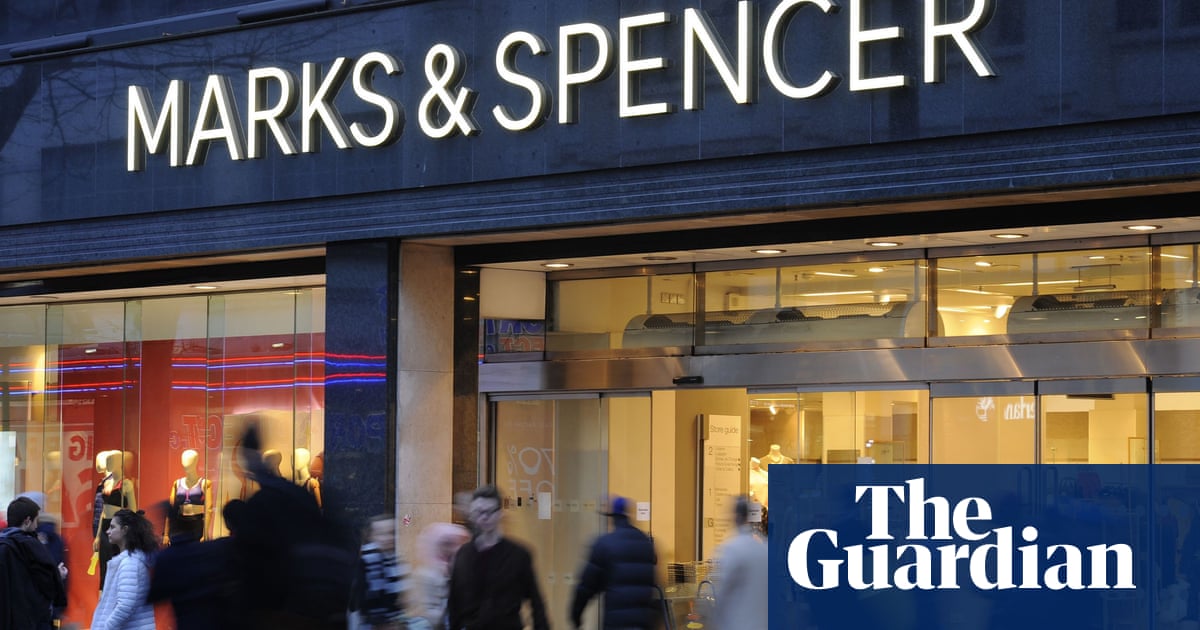
Marks & Spencer took its biggest share of the clothing and homewares market in seven years and the largest slice of the food market ever over Christmas as the UK sought to party after two years of Covid disruption.
The UK’s biggest supermarket chain, Tesco, also reported strong numbers on “super Thursday”, a big day for retail reporting when Asos, Halfords, the Very online catalogue business and Virgin Wines provided updates.
High inflation boosted numbers to give retailers some of the best-looking figures in years, but headline income masked a dip in the volume of items sold for some. Like Sainsbury’s, which reported its Christmas trading on Wednesday, Tesco said the number of goods sold had slipped back slightly on a year before as shoppers reined in spending on non-essentials, spending less on gifts, for example.
M&S was a standout, managing to increase the number of items sold after improving the style of its clothing and relative price of its food.
Sales of fashion and homewares at M&S rose 8.8% in the three months to 31 December as it said shoppers had exploited its “click & collect” service to pick up online orders during the postal strikes. Partywear sales more than doubled and formalwear was up 40% with a particularly strong performance on menswear.
Food purchases rose 10.2% with strong turkey sales and more than a fifth of shoppers putting one of its “Remarksable Value” low-price items in their baskets. M&S sold 1.1% more items of food and 2% more clothing and homeware products as it put clothing prices up by 7%, for example, less than the retail headline rate of 10.7%.
The chief executive said the clothing and homewares business had put on an “outstanding performance” with every category increasing sales as it benefited from focusing on selling essentials, including knitwear and thermals, during the cold snap.
Stuart Machin said: “After two years of Covid disruptions customers enjoyed entertaining at home”, with the group’s partywear and Collection luxury food range selling out.
Tesco had its best-ever day of sales on 23 December. Sales rose 7.2% in the UK in the six weeks to 7 January and almost 8% in total. Total food sales were up by 12.9% – in line with average food inflation figures. Online sales rose 2% over Christmas, bouncing back from a 0.7% dip in the quarter as a whole.
The chief executive, Ken Murphy, said spending had been more resilient than feared and customers were showing “cautious optimism” amid full employment and better availability of products after 2021’s supply chain issues and Covid lockdowns.
He said there was no sign of a sudden drop-off in trade post-Christmas and shoppers appeared to be “weathering the storm” of the cost of living crisis so it seemed “the recession will be a little shallower than people were thinking”.
Shoppers appeared to be managing their budgets by, for example, switching to own-label and buying more frozen goods, which can reduce waste.
“I’m really pleased with our performance over this period – particularly the further strong growth at Christmas on top of the exceptional growth of the last few years,” said Murphy.
Tesco and M&S expect to meet profit expectations for the year after slight upgrades from Sainsbury’s and JD Sports on Wednesday. They also forecast high inflation to ease from the middle of this year as the cost of some commodities, such as cotton, starts to drop and freight costs are falling.
It was a different story at the online fashion retailer Asos, however. Group sales sank 4% in the four months to 31 December, including an 8% fall in the UK, as problems with deliveries, including postal strikes, dented sales.
Asos said “weak consumer sentiment” in the UK was also to blame, and continued to expect to make a loss in the first half of its financial year.
José Antonio Ramos Calamonte, the chief executive of Asos, pointed to “a lot of volatility” in customer behaviour, which he expected to continue until at least the end of the summer.
The online retailer is cutting costs, with measures announced in the autumn, including reducing unwanted stock, closing three temporary warehouses, cutting 10% of jobs at its head office and shifting out of one floor of the building, and removing 35 unprofitable brands.












